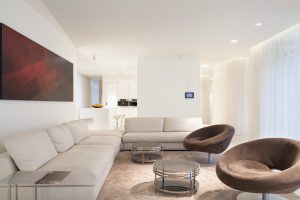The potency of Traditional Architecture
Laurie Baker used to say that people should design buildings like Indians in India because when they do not, the buildings are not good for the climate or for the materials.
We have rich and varied vernacular architecture which is beautiful and interesting. Unfortunately, most of the buildings that we do are not Indian. I will say we are more western by our way of thinking than our way of living.
The traditional architecture was built according to the climate. People used materials that were available in their area. For example, bamboo, mud, lime, timber, stone, and bricks. They also often used thatch for roofs.
This architecture was crucial for social-economic development. Bamboo, mud, lime, timber, stone bricks, and thatch were used for the building based on what was needed and available.
Features of Traditional Architecture
1. Sloping Roofs
The most important thing in a traditional house design is the sloping roof. That protects the walls from getting wet. Indian architects thought it was the hardest part to design. It comes down low and keeps the inside of your house cool, so you don’t have to spend money on air conditioning.
In some places, we say “I want to make a roof.” But in flat-roofed homes and apartment buildings, you can’t see any roofs at all during the last few years. But recently there has been a comeback for sloping roofs in residential homes again.

2. Courtyards
The houses in the olden days had courtyards. If there were two, they were called Ettukettus. The size of the house depended on the size of the courtyard and how many courtyards it had.
A family’s Nair House would have more courtyards added if it had more people living in it. The internal courtyards always had an interior veranda on all four sides of them for ventilation and natural light.
The design style of this traditional architecture had many old houses have a kitchen in the north-east corner. This is because when you are cooking, the smoke blows away from that side of the house. In contemporary architecture, houses usually had straw roofs and if one caught on fire, it would not easily spread to other parts of the house. Also, most homes with courtyards had rooms in places with fans blowing in them to help make things easier when cooking or doing laundry.
The cattle sheds and gatehouses were put in the right place based on the principles in ancient texts. Trees were also planted on each side of the house, according to Saastras.
Obstacles in preserving ancient buildings
Old houses depended on social customs. There were differences in each house depending on when it was built. These things are less important now because people’s lifestyles and relationships change often.
Old buildings are old-fashioned. The room height is low and there is not much space for windows. The modern way of living is different since the family system has changed.
Old buildings do not have attached bathrooms or large courtyards where people can spend time outside like they used to before with the joint families.
The old houses had a hall for the men during the day. They sat there and talked to the guests. The bedrooms are for sleeping, so they are dark. Women have more status now, and it is better if people can read in their bedroom too.
Instead of putting in more windows, people are building new houses with concrete roofs on them because that makes them look richer. These new homes have woodcarvings on them that were sold before they were built so the money could be spent on construction instead.
A lot of people who are old don’t want to keep their house. Young people are not interested in saving their old house, but that is not because the home may be structurally bad.
Traditional Architecture vs Modern Architecture
It is true that modern and traditional homes have their own benefits. Modern architecture has a lot of benefits, so do traditional homes.
Colonial Architecture Impact
Colonial Architecture also influenced traditional buildings.

Colonial homes led to changes in how houses were built. But these changes were gradual and suited the climate. Many buildings from the past were made by the British and they followed a traditional style of architecture for that area.
In the past, modern vernacular architecture and traditional architecture went in different directions. But now they are going in the same direction. The engineers and architects learned from western textbooks. They had no regard for traditions. They are more western, not because of their style of living, but by their way of thinking.
The status of craftsmen has been much lower in the last few decades. This is because of all the changes that have happened. Napier Museum was built by the British architect Chisholm. Many people like this museum because it has many things that are traditional.
There are some problems with new buildings which are flat-roofed, made of concrete, and are not outstanding for the climate. Although there were some inconveniences with the old house, it was a better place to live than these new buildings.
People know that some old buildings are beautiful. But building new ones that look like the old ones is too expensive. People do not know about other options though.
However, unfortunately, many contemporary architects and designers don’t understand what people want in their homes. They think people who live there don’t like their work because they can’t appreciate formal qualities of architecture designed for architects and magazines to admire rather than the people living with it.
Crux
In the past, there were many ideas for how to build a house. They can seem old-fashioned, but they are based on what people want. They may have been out of date, but they still worked in the right climate and with local materials. Even today we should take good aspects from traditional architecture and use them in a modern context.
Traditional Architecture vs Modern Homes
Many people want traditional features in their homes, even though they are modern. They can have all the modern conveniences, but people might feel more at home with these “ethnic style” houses. More and more people are wanting these kinds of homes because of how concrete buildings look in cities and towns.
Traditional House Plan
The interior design of traditional houses is straightforward. At first, it didn’t have the first floor. But later, the first floor was included because of people’s expectations.
Many people’s homes had old windows and doors from one of the buildings that they used for this house. The two windows in the staircase area were ones she used for her other house in the city.
The doors of this house came from one of the houses that were pulled down for the office complex. They are eight feet tall with a ventilator and have double shutters. The stone walls around the pillars made them too decorative, so they were not used in this house.
Long roofs protect the walls from rain and sun. Most rooms get cross ventilation. The bedroom has tiles and windows that make it feel like your home is in South India. Windows at floor level make it easy to get fresh air when you are sitting on the ground.
Verandah
Most people like large verandahs with mixed furniture. You could even put a bed and a desk. If you want, you can divide it into smaller spaces. A verandah can be very relaxing to have in the house because it is cool and there is good air circulation.
The house had many windows that are well situated to take advantage of cross ventilation.
The roof is traditionally designed with an overhang that protects the walls from sun or rain coming in when it’s windy outside. The Chettinad columns, athangudi tiles and granite stone along the edges, eave boards, timber rafters make a traditional home look nice.
Courtyards
Indian homes used to have courtyards. These courtyards ensured that the air could get in and out of the house. The rafters from demolished buildings make it easy for air to flow and cool the house. Using those leftovers as timber roofs helped the home to be cool.
Built-In Furniture
The built-in seat is a common feature in most traditional houses. Today, they can be found in contemporary homes too. The style may differ – one is a traditional Tamil style while the other is found in many of the homes that are being built these days.




